STUDIO STABILIZATION
preservation: architecture
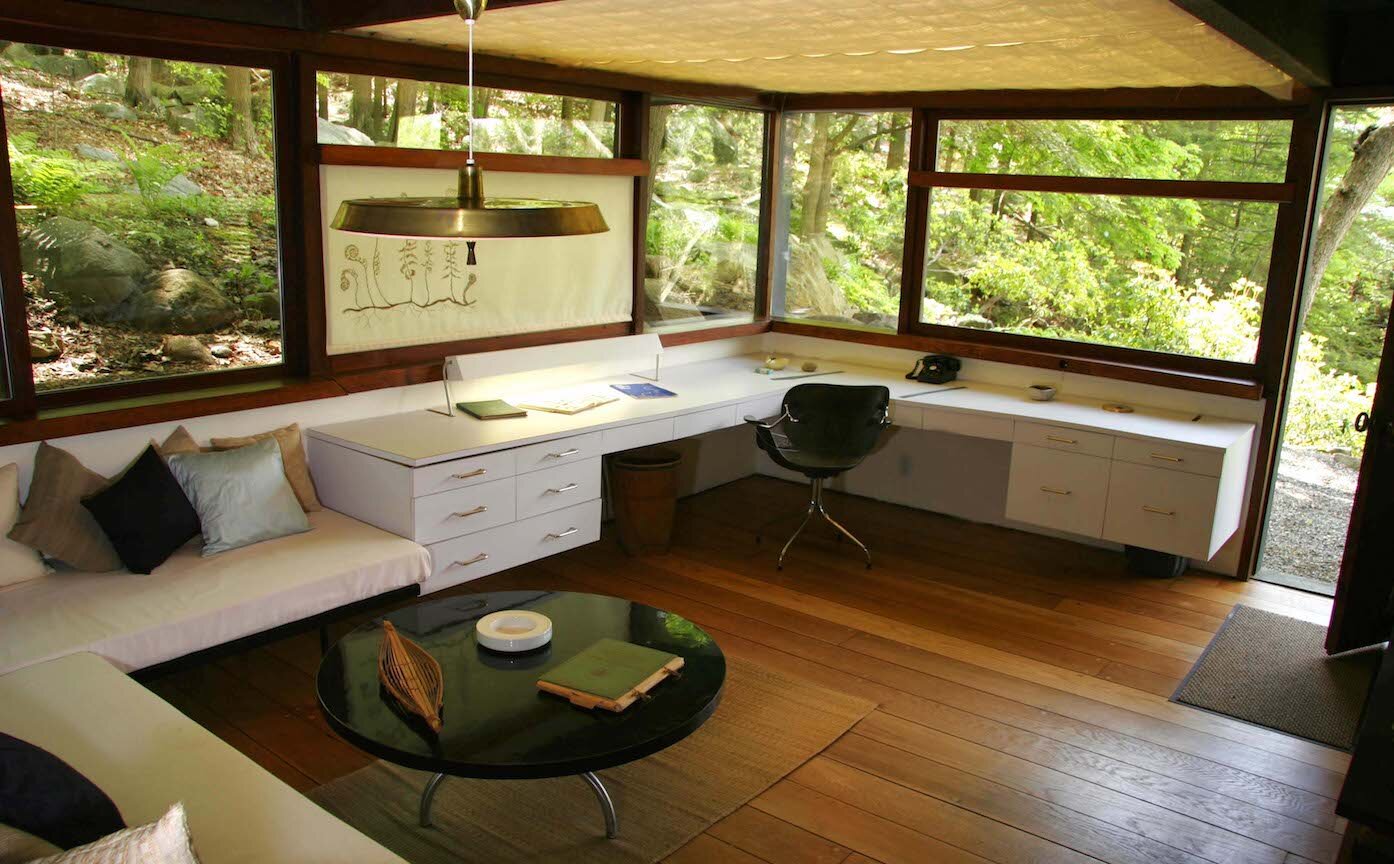
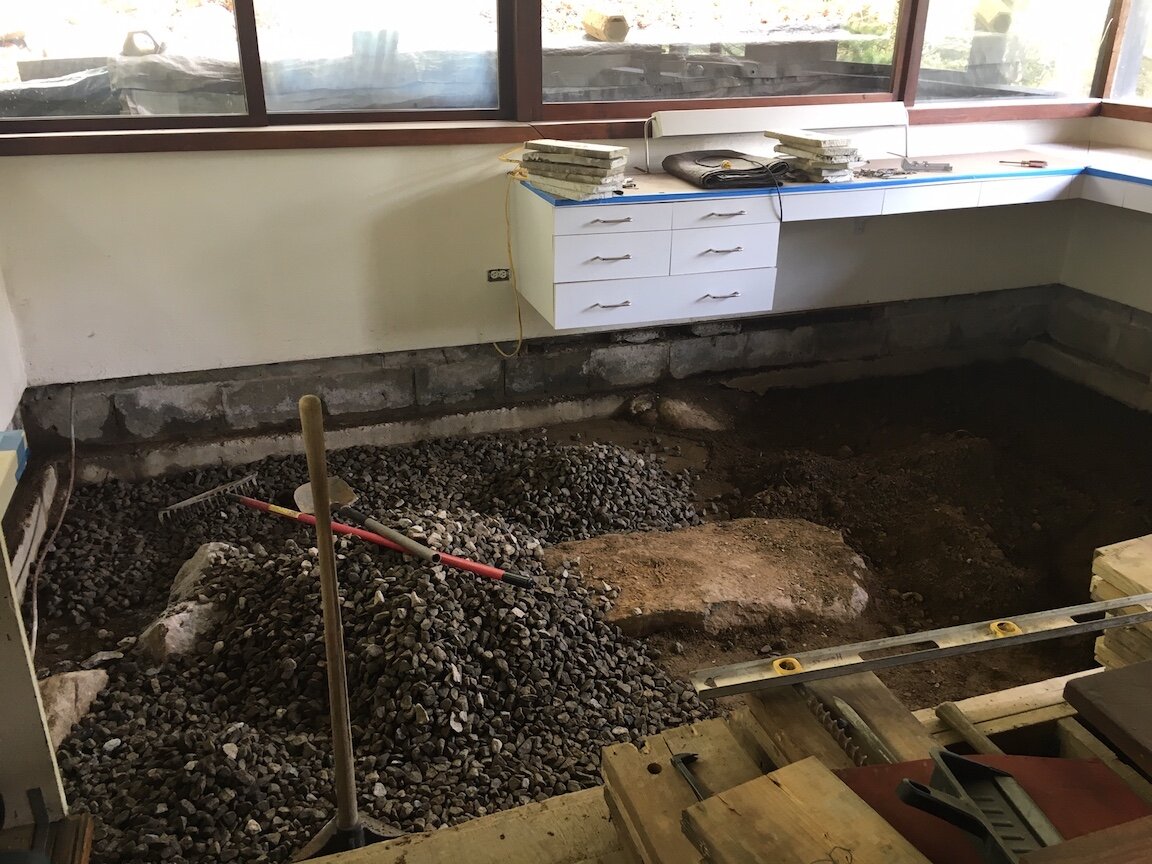
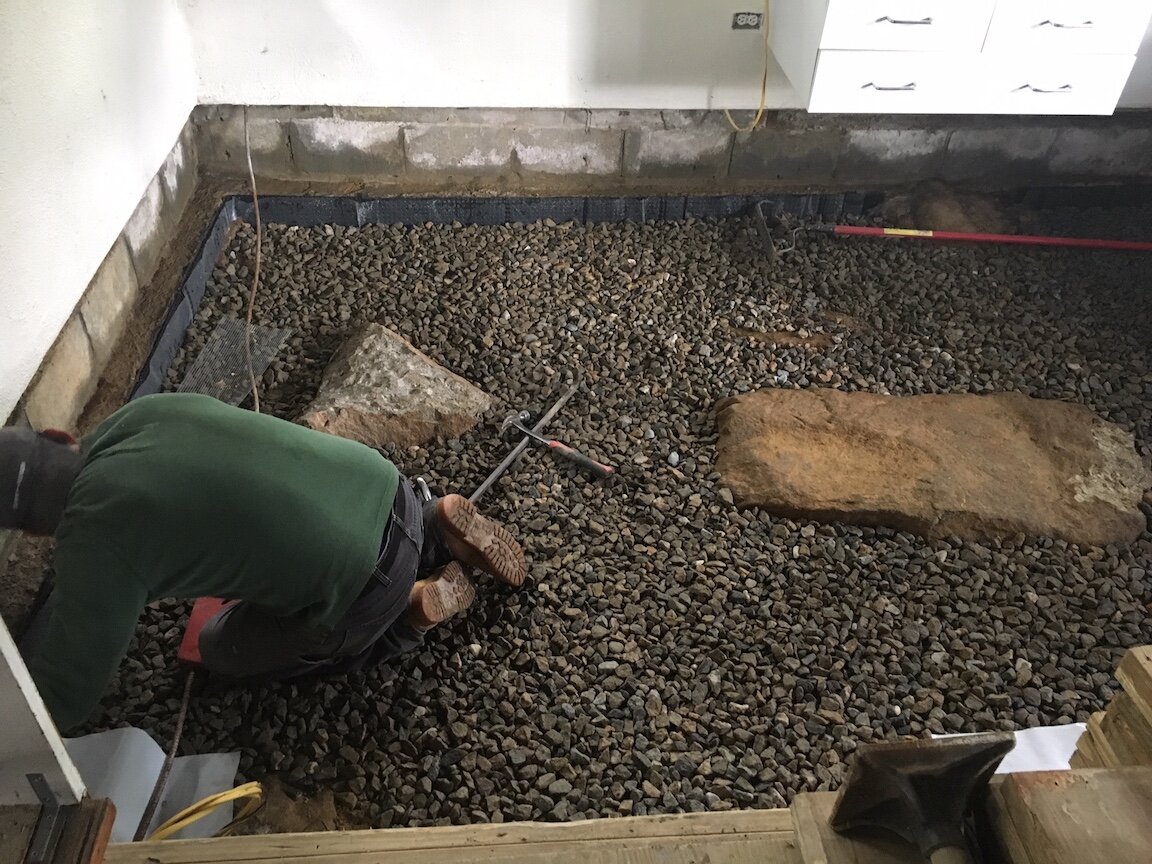
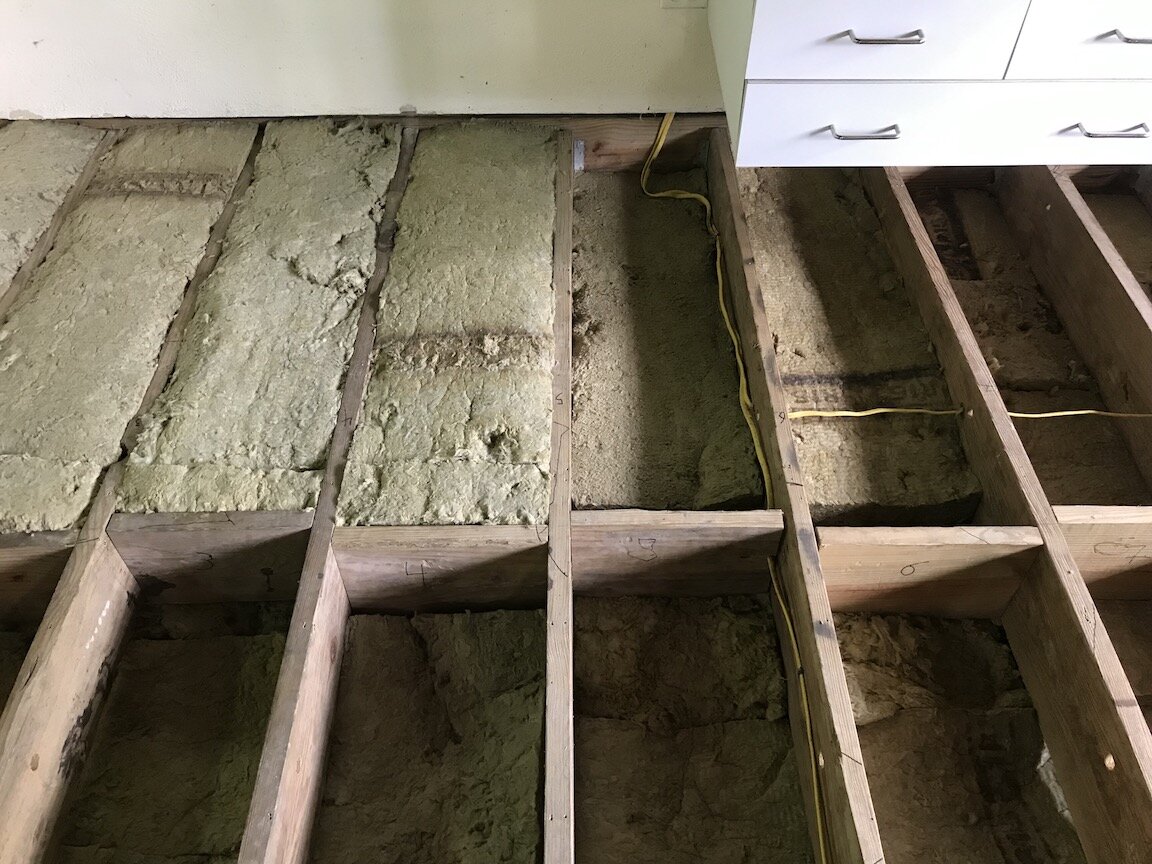

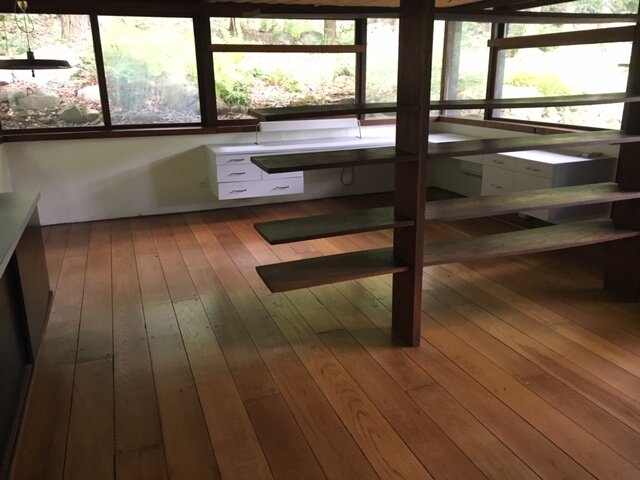

DRAGON ROCK STUDIO
The Studio was designer Russel Wright’s (1904–1976) personal space where he worked, slept, entertained, and was inspired. A compact building nestled into the landscape beside the Waterfall, the Studio illustrates many of the recurring themes of Dragon Rock – an integration of the built and natural environment, the influence of Japanese design, the juxtaposition of natural and synthetic materials, efficiency of space, and multipurpose use.
Post 1976 Use and Early Restoration Efforts
From the late 1970s until 2001, the Studio served as lodging and offices, first for the Center for Man and the Environment under the auspices of The Nature Conservancy, then in 1986 for the newly formed Manitoga, Inc. In 2002, the structure’s green roof was re-engineered and replanted, followed the next year by restoration of the wood floors and bathroom under the direction of preservation architects Jan Hird Pokorny Associates. At this time new radiant floor heating was installed, and the Studio was refurnished to reflect Russel Wright’s lifetime (ca. 1963). The Studio opened to the public in 2004 and has remained a much admired and key interpretive feature of the site experience. Along with the House and 75-acre landscape, the Studio received National Historic Landmark status in 2006. Six years later, Manitoga’s structures and landscape names a World Monuments Fund Watch Site in recognition of cultural significance and urgent needs.
The Studio’s unique siting on the stone quarry ledge and within the earth, its expansive run of windows along three sides, and the experimental nature of many interior surfaces, while beautiful, have presented and continue to present stewardship challenges. In 2015, Manitoga’s leadership committed to a complete evaluation of landscape site conditions and of the architectural integrity of the House and Studio, and based on expert analysis, to address all critical issues including infrastructure repair, mechanical systems upgrade, and environmental conditions stabilization.
2017 – 2019 Studio Stabilization
Working with a team of professionals, Manitoga undertook an analysis of the environmental conditions, mechanical systems and infrastructure of the Studio to discover extreme levels of humidity, significant water infiltration in the basement, deterioration of the existing vapor barrier, and penetration of the stone foundation walls by small burrowing animals. The need to remediate was absolute and immediate in order to prevent further deterioration of the original structure and irreparable damage to Russel Wright’s unique interior finishes. Main stabilization tasks and systems upgrades included the following:
• Cinderblock and stone foundation walls reinforced, and new custom drainage system implemented to re-direct water infiltration.
•. Studio basement cleared, walls insulated,, and a new concrete floor poured to create an open air mechanical room.
• New system of weep holes, trenches, and drainage pipe installed to pull water run-off away from the structure.
• Interior wood flooring was removed, and crawl space beneath converted to “slab on grade” with drainage and vapor barrier.
• Existing electrical power lines were upgraded, and remnants of radiant flooring system drained and capped.
• Energy-efficient dehumidification and electric heating and cooling system was installed.
• Main water shut-off valve was installed to ensure proper winterization.
Future Plans
Longer term goals include 1) replacement of damaged window sills and exterior paneling; 2) replacement of Studio windows, including fabrication of custom interior storm windows; and 3) conservation of Wright’s interior decorative panels and experimental finishes
PROJECT TEAM
Site Preparation / Contractor – Lars Lindbergh, Tiny Houses, Inc.
Engineering – J. Cramer Silkworth, Baukraft Engineering, PLLC
Electric – SK Electric
Excavation – Cedar Hill Landscaping
Architecture – James Hartford, AIA, LEED AP, CPHC, River Architects, PLLC–
Plumbing – Robert Viaggiano Plumbing & Heating
Project Management – Melissa Pimentel, Manitoga Director of Operations
PROJECT SUPPORT
Lead funding for the Studio Stabilization was provided by Manitoga Board President Tom Krizmanic with additional support from Lyn & John Fischbach, David Diamond & Karen Zukowski, Gary & Laura Maurer, Jack Chapman, and from the Ralph E. Ogden Foundation and the Frank B. R. Sahm Jr. Charitable Foundation.
